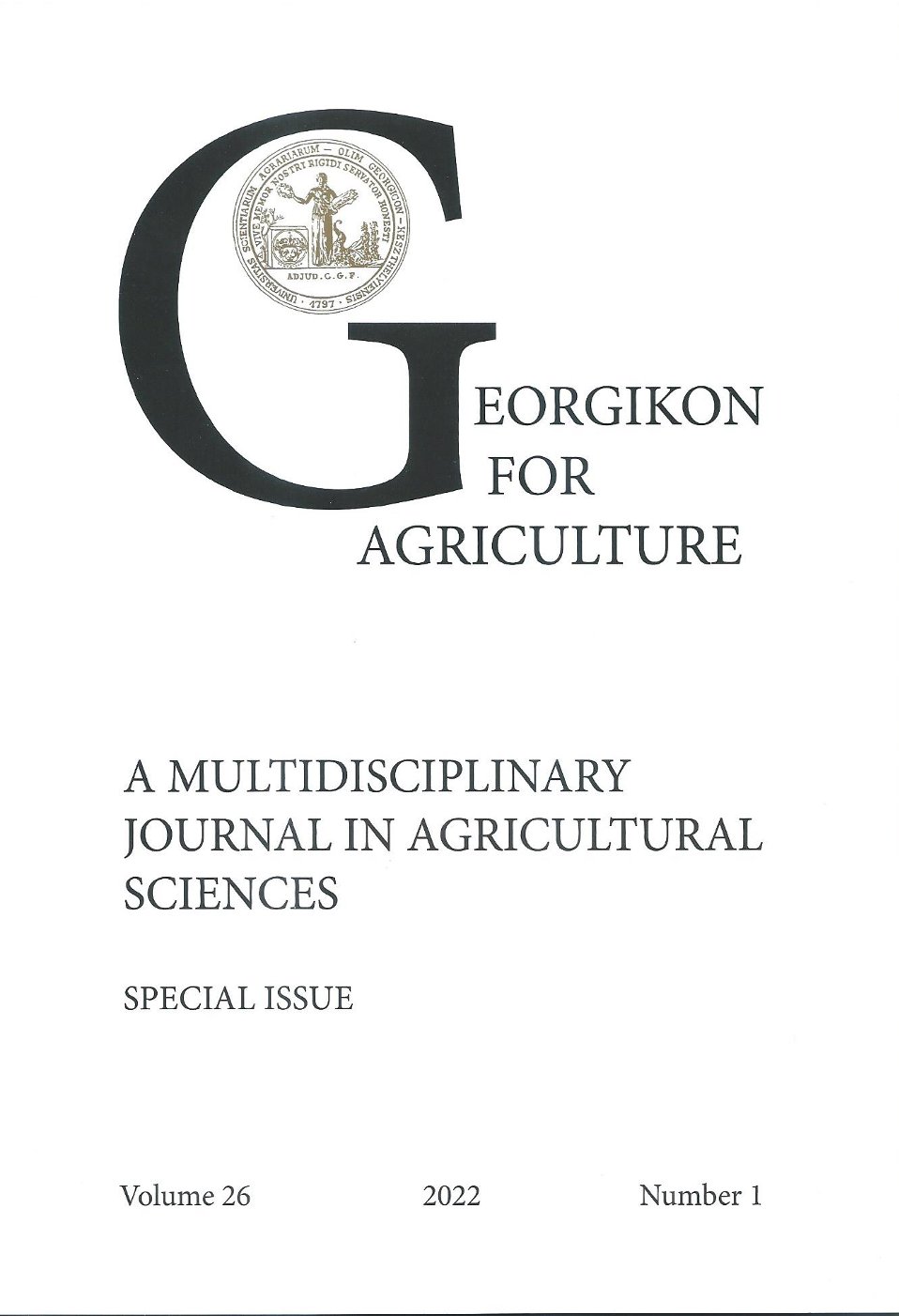Díszfák kérgén repedést, váladékfolyást okozó baktériumfajok azonosítása
Keywords:
bark canker, Brenneria, Lonsdalea, ornamental treesAbstract
In the last few years several reports were published about bacterial species (Brenneria and Lonsdalea spp.) causing bark cancers on deciduous ornamental trees. Infected trees are characterised by symptoms of woody parts: vertical cracks on trunk and branches, necrosis, cankers from which black or reddish-brownish fluid is oozing. These bacteria cause serious problems in nurseries, public areas and parks. Our purposes were to survey, isolate and identify the causing agents of bark cancers and oozing liquids. Between 2019 and 2021 from several points of Budapest samples were collected. By classical and molecular methods were analysed and verified that Brenneria species are responsible for the bark canker diseases on ornamental trees. Their presence on ornamental trees in Hungary is increasing problems of plant protection in urban environment. Pathogens attack primarily older trees which treatment could be solved hardly. There aren’t effective appropriate application methods and pesticides against bacteria, the treatments could perform in the evenings or at night – after informing people who lives there.
References
Csóka Gy., Hirka A., Koltay A. és Kolozs L. 2013. Erdőkárok. Budapest. NÉBIH Erdészeti Igazgatósága és az Erdészeti Tudományos Intézet.
Dávid O. 2015. A platán új baktériumos betegsége. Diplomamunka. Budapesti Corvinus Egyetem. Budapest.
Galambos N. 2016. A brennériás betegség új gazdanövénye a nyír (Betula pendula Roth.). Diplomamunka. Szent István Egyetem. Budapest.
Garrity, G., Brenner, Don J., Krieg, N.R. and Staley, J.R. 2007. Bergey's Manual of Systematic Bacteriology. Volume 2: The Proteobacteria. Part B The Gammaproteobacteria. Springer Science & Business Media. 2. 587-640.
Gyuris R. 2020. A vadgesztenyefa injektálása során felmerülő növényvédelmi problémák, Diplomamunka. Szent István Egyetem. Budapest.
King, E.O., Moore, E.R.B., Vauterin, L., Steenackers, M., Mergaert, J., Verdonck, L. and Swings, J. 1954. Two simple media for the demonstration of pyocyanin and fluorescin. Journal of Laboratory and Clinical Medicine. 44. 301–307.
Klement, Z. 1982. Hypersensitivity, In: Phytopathogenic Prokaryotes, Vol. 2. Mount, M.S. and Lacy, G.H. eds. Academic Press, New York, 147–177.
Maniatis, T,. Sambrook, J. and Fritsch, E.F. 1989. Molecular cloning: A laboratory manual (3rd volume). New York: Cold Spring Harbor Laboratory, Cold Spring Harbor.
Németh J., Csonka I. és Szabó L. 1999. Erwinia salicis o kozta fapusztulás fehér fűz állományban. 45. Növényvédelmi Tudományos Napok. Budapest. 119.
Redondo, M.A., Boberg, J., Olsson, C.H.B. and Oliva, J. 2015. Winter conditions correlate with Phytophthora alni subspecies distribution in Southern Sweden. Phythopathology. 105(9). 1191-1197.
Tenorio-Baigorria, I., Végh, A. and Palkovics, L. 2017. Plant protection problems of ornamental trees in public spaces and parks. 15th Wellmann International Scientific Conference, Hódmezővásárhely, 2017. május 3., Book of abstracts. 76-77.
Tenorio‐Baigorria, I., Koltay, A., Karacs‐Végh, A. and Palkovics, L. 2019. Brenneria and Lonsdalea species in Europe. IUFRO 7.03.10. Methodology of forest insect and disease survey in Central Europe Meeting 2019, Recent Changes in Forest Insects and Pathogens Significance 16 - 20 September 2019 Suceava, Romania. Book of abstracts. 84.
Tóth, T., Lakatos, T. and Koltay, A. 2013. Lonsdalea quercina subsp. populi subsp. nov., isolated from bark canker of poplar trees. International Journal of Systematic and Evolutionary Microbiology. 63. 2309–2313.
Végh A., Tóth A., Zámbó Á., Borsos G. és Palkovics L. 2013. A dió (Juglans regia L.) kéregrepedése, feketefolyása: új baktériumos betegség Magyarországon. Növényvédelem. 49(9). 397–401.
Végh A., Soós I. és Palkovics L. 2015. A Brenneria salicis baktériumfaj jellemzése, első hazai molekuláris azonosítása. 61. Növényvédelmi Tudományos Napok. Budapest. 55.
Downloads
Published
Issue
Section
License
Copyright (c) 2022 Tenorio-Baigorria Imola, Palkovics László, Végh Anita

This work is licensed under a Creative Commons Attribution-NonCommercial-NoDerivatives 4.0 International License.
Cikkre a Creative Commons 4.0 standard licenc alábbi típusa vonatkozik: CC-BY-NC-ND-4.0. Ennek értelmében a mű szabadon másolható, terjeszthető, bemutatható és előadható, azonban nem használható fel kereskedelmi célokra (NC), továbbá nem módosítható és nem készíthető belőle átdolgozás, származékos mű (ND). A licenc alapján a szerző vagy a jogosult által meghatározott módon fel kell tüntetni a szerző nevét és a szerzői mű címét (BY).




